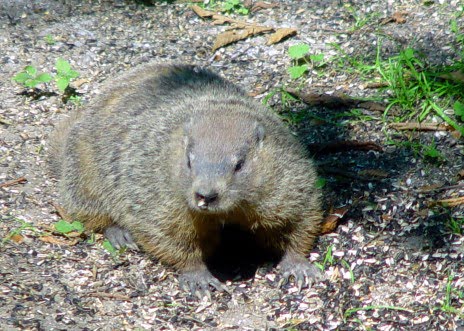WOODCHUCKS AND GROUNDHOGS
The Groundhog (Marmota monax), also known as the Woodchuck, or the Whistlepig (particularly in the Southern United States), is a rodent of the family Sciuridae, belonging to the group of large ground squirrels known as marmots. Most marmots live in rocky and mountainous areas, but the Woodchuck is a lowland creature. It is widely distributed in North America, from Alaska to Alabama and Georgia. In the West, it is found only in Alaska, Alberta, British Columbia and northern Washington. In the United States and Canada, there is a Groundhog Day celebration that gives the groundhog some added popularity.
The name woodchuck has nothing etymologically to do with wood. It stems from an Algonquian name for the animal (possibly Narragansett), wuchak. The apparent relationship between the two words has led to the common tongue twister, “How much wood would a woodchuck chuck if a woodchuck could chuck wood? A woodchuck would chuck as much wood as a woodchuck could chuck if a woodchuck could chuck wood.”
Groundhogs are typically 40 to 65 cm long (including a 15 cm tail) and weigh 2 to 4 kg. In areas with fewer natural predators and large quantities of alfalfa, they can grow to 32 inches (80 cm) and 30 lb (14 kg). They can live up to six years in the wild, and ten years in captivity.
The groundhog is one of a small number of species that have grown greatly in numbers since the arrival of European settlers in North America, since the clearing of forests provided it with much suitable habitat. It prefers open country and the edges of woodland. As a consequence, it is a familiar animal to many people in the United States and Canada. Groundhogs are excellent burrowers, using burrows for sleeping, rearing young, and hibernating. The burrows generally have two exits, and the groundhog rarely ventures far from one of them for safety. While preferring to flee from would-be predators, the groundhog is known to viciously defend its burrow when invaded by predators such as skunks, foxes, weasels or domestic dogs. It can inflict quite a bit of damage with its two large incisors and front claws, especially when the predator is at a disadvantage inside the burrow.

